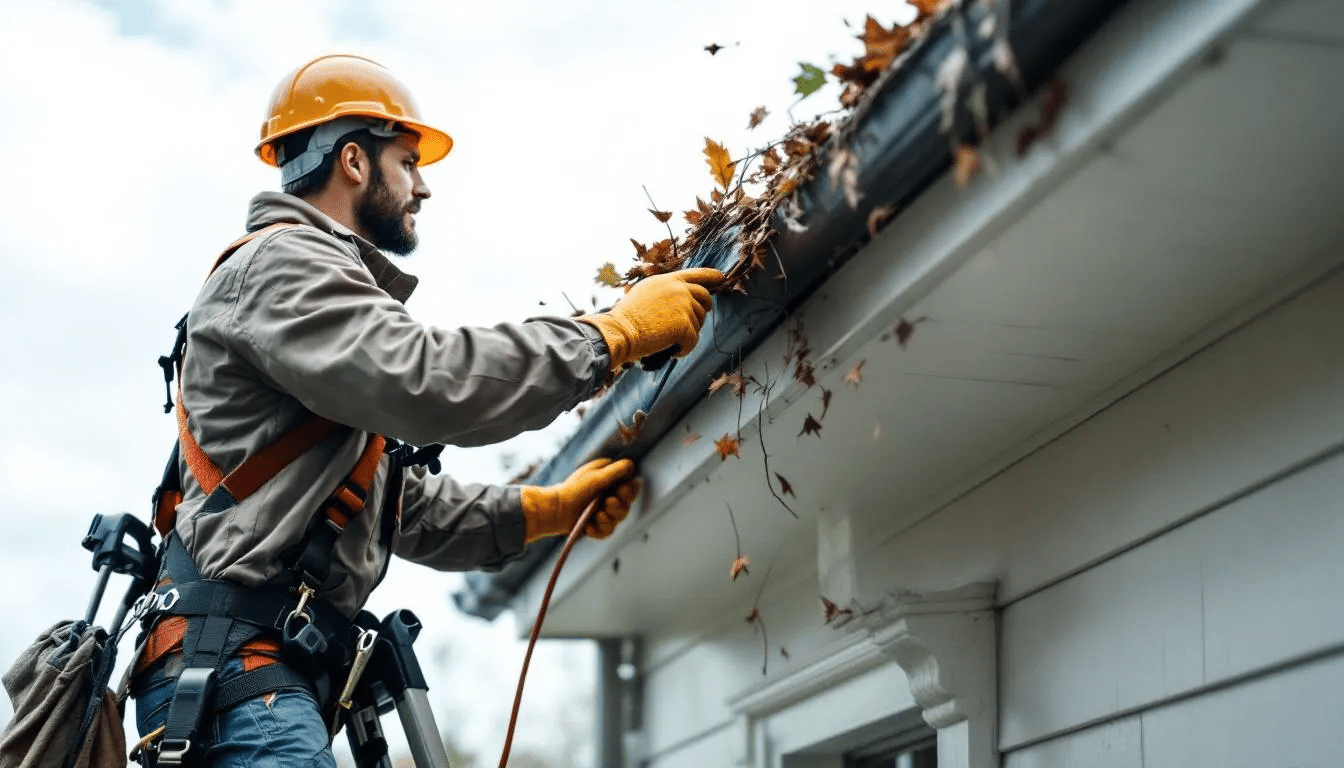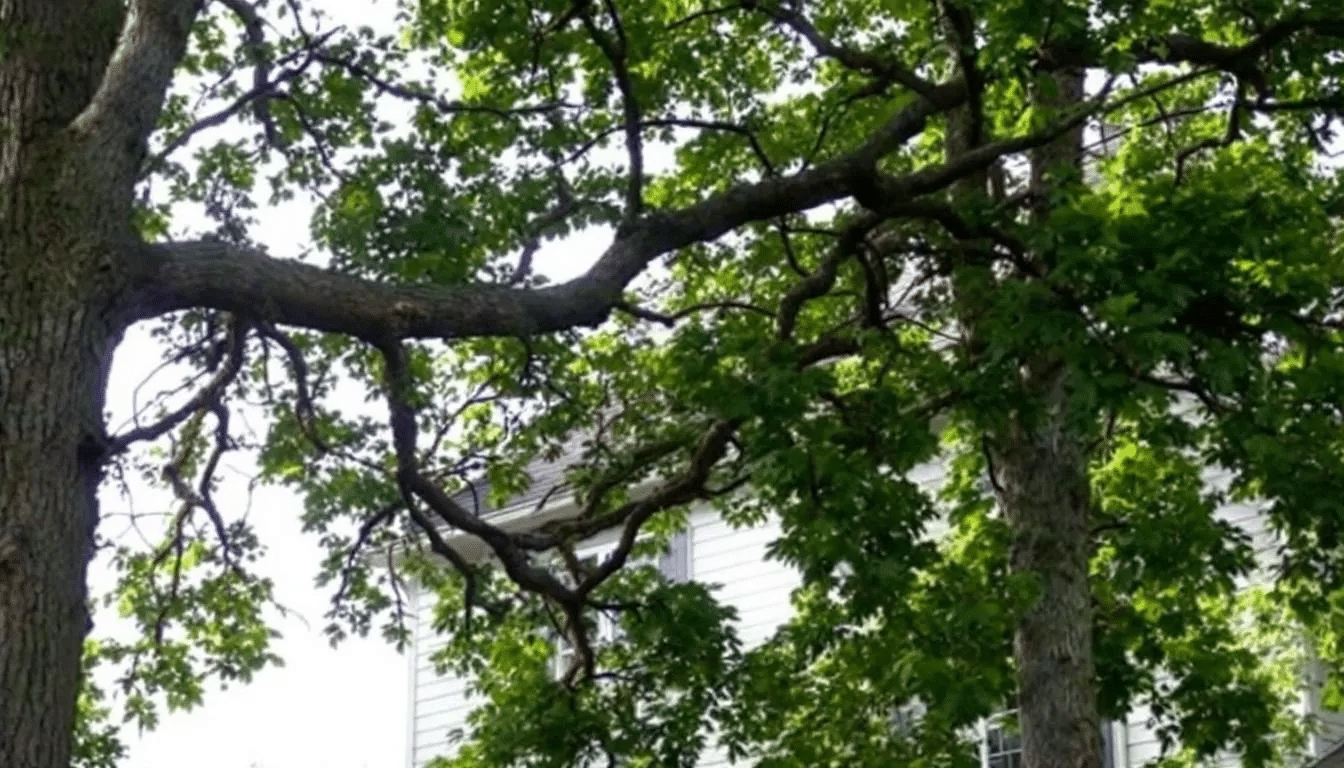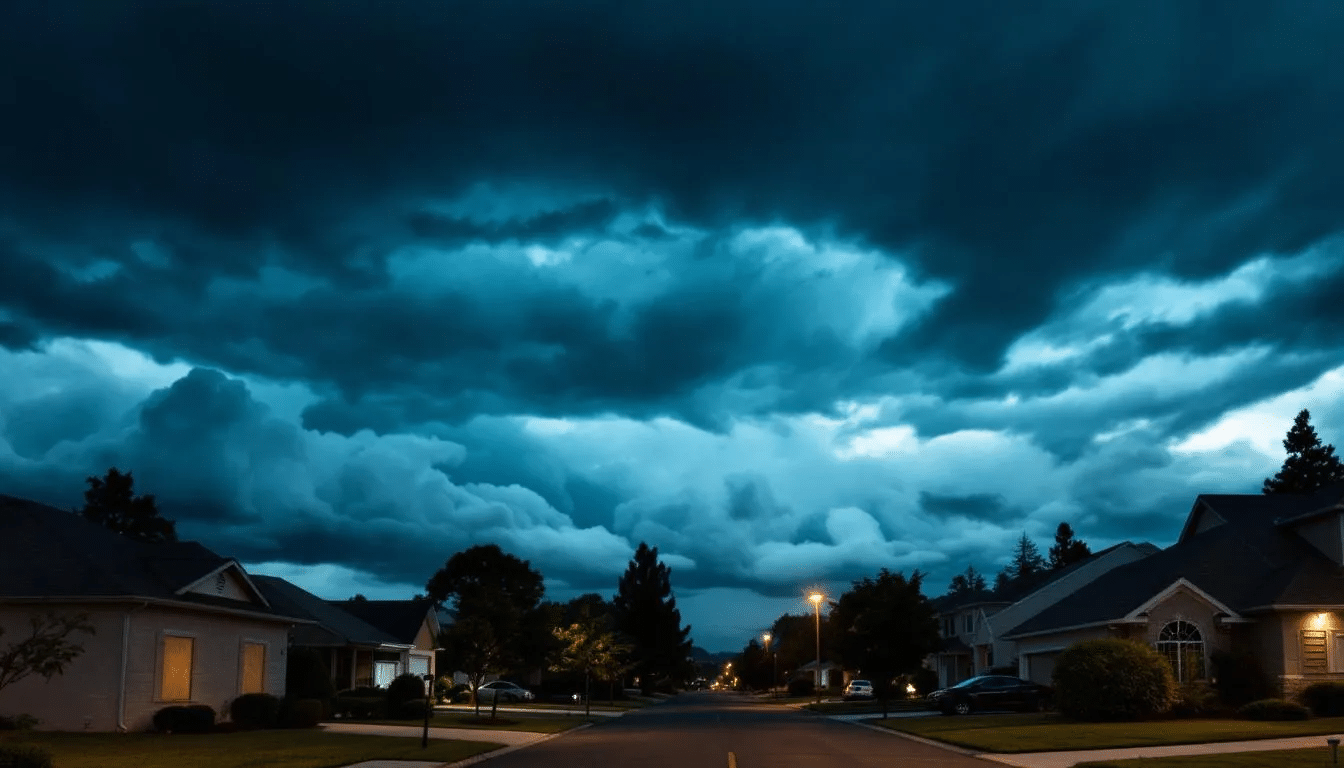As summer winds down and the Texas heat finally begins to ease, homeowners should start thinking about their Summer Roof Checklist. The transition from scorching sun to fall storms is when small roof issues often show up — cracked shingles, clogged gutters, or worn flashing can quickly turn into leaks once heavy rains arrive. Taking a little time now to inspect, clean, and prepare your roof ensures your home stays protected, energy efficient, and ready for whatever the fall season brings.
Key Takeaways
- Complete your roof inspection by early September before fall storm season begins in October
- Focus on clearing gutters, inspecting shingles, and sealing vulnerable areas damaged by summer heat
- Address thermal damage from summer temperatures that can reach 140°F on roof surfaces
- Schedule professional inspections now while contractors have availability before peak storm season
- Document all findings with photos for insurance purposes before potential storm damage occurs
As the intense heat of summer begins to wane and cooler months ahead approach, many homeowners overlook a critical component of home maintenance: preparing their roofing system for fall storms. The seasonal transition from extreme temperatures to unpredictable fall weather creates the perfect time to address summer-induced damage before it wreaks havoc during autumn’s harsh conditions.
Insurance data reveals a startling truth: homes with documented roof maintenance experience 35% fewer storm damage claims compared to neglected properties. The end of summer presents a narrow window where daylight hours decrease but weather conditions remain favorable for maintenance activities. This comprehensive maintenance checklist will guide you through critical tasks that protect your home’s structural integrity and improve energy efficiency before fall arrives.
The summer heat has already tested your roof’s limits, with surface temperatures reaching up to 140°F during peak conditions. These extreme temperatures cause roofing materials to expand and contract repeatedly, creating vulnerabilities that fall storms will exploit mercilessly. Your roofing system needs immediate attention to address thermal damage, clear accumulated debris, and seal potential entry points before high winds and heavy rainfall begin their assault.
Essential Roof Inspection Tasks
Begin your end of summer maintenance with a thorough ground-level visual inspection using binoculars to safely assess your roof’s health. This approach allows you to identify obvious issues without risking personal safety while the intense UV exposure effects of summer become apparent. Position yourself at multiple vantage points around your home’s exterior to examine different sections systematically.
Focus your inspection on specific indicators of summer damage: missing granules that appear as dark spots on asphalt shingles, curled or cupped shingle edges, and exposed nail heads that signal thermal movement. The summer increases in temperature cause asphalt shingles to become more pliable, making them susceptible to wind damage and granule loss. Look for excessive granule buildup in gutters, which indicates accelerated wear from prolonged heat exposure.
Safety guidelines dictate that homeowners should limit their inspection to ground-level observation and simple tasks like cleaning gutters from a stable ladder. Any work requiring steep-angle access, structural assessment, or repair of roofing materials should be delegated to an experienced team of professionals. The sun sets earlier each day as fall approaches, reducing safe working hours and emphasizing the importance of efficient inspection techniques.
Shingle and Roofing Material Assessment
Summer storms and prolonged exposure to extreme heat create specific damage patterns in roofing materials that require immediate attention. Asphalt shingles become brittle after months of thermal cycling, developing cracks that trap moisture and accelerate deterioration. Inspect each visible section for signs of thermal stress, including blistering, splitting along edges, and areas where shingles have lost their protective granule coating.
Wind-lifted shingles from late summer thunderstorms create vulnerable entry points for fall’s driving rains. These partially detached shingles may appear intact from ground level but have compromised sealing that allows water infiltration. Check for uniform shingle alignment and any pieces that appear raised or out of position compared to surrounding areas.
The roof deck beneath damaged shingles may show signs of moisture infiltration or structural compromise from repeated thermal expansion. Dark staining, sagging areas, or visible gaps between shingles indicate potential underlying damage that requires professional roof inspection before fall weather arrives. Document these findings with photographs for insurance purposes and contractor consultations.
Flashing and Seal Inspection
Flashing systems around chimneys, vent boots, and skylights endure significant stress from thermal movement during summer months. These critical waterproofing components expand and contract at different rates than surrounding roofing materials, creating gaps and separation that compromise your home’s weather resistance. Focus particular attention on step flashing along roof-to-wall transitions, where wind-driven rain commonly penetrates during fall storms.
Examine all roof penetrations for cracked or separated caulk that may have failed under thermal stress. Vent boots, pipe flashings, and exhaust fan housings often develop cracks around their perimeters where sealant has hardened and lost elasticity. September weather provides ideal conditions for resealing these vulnerable areas before temperature drops make materials less workable.
Metal flashing components may show signs of thermal fatigue, including loosened fasteners, gaps at joints, or corrosion from summer humidity exposure. These issues require immediate attention as fall’s temperature fluctuations will accelerate failure rates. Professional assessment becomes essential when flashing damage extends beyond simple caulk replacement or when structural movement is evident.
Gutter and Drainage System Preparation
Clean gutters before fall’s leaf drop overwhelms your drainage capacity and creates costly repairs throughout the cooler months. Begin by removing accumulated summer debris including seed pods, small branches, and organic matter that retains moisture against your roof’s edge. This maintenance routine prevents water backup during heavy fall rains and protects your home’s foundation from drainage issues.

Inspect gutter attachments that may have loosened during thermal expansion cycles throughout the summer. The intense heat causes metal gutters to expand significantly, stressing mounting brackets and potentially creating gaps that allow water infiltration behind fascia boards. Test each section by gently pulling downward to identify loose connections requiring immediate attention.
Verify proper gutter slope toward downspouts, as summer settling and thermal movement can alter drainage angles. Water should flow readily toward downspout locations without pooling in any section. Adjust slopes as needed and ensure downspouts direct water at least six feet from your foundation to prevent structural damage during fall’s increased rainfall.
Debris Removal and Prevention
Target accumulated organic debris that summer weather has deposited throughout your gutter system. Pine needles, maple seeds, and other materials create dense mats that block proper drainage and trap moisture against roofing materials. These blockages become particularly problematic when fall brings heavy leaf coverage and increased precipitation.
Remove debris from downspout elbows and underground drainage connections where blockages commonly develop during heavy fall rains. Use a plumber’s snake or pressure washer to clear accumulated materials from these critical drainage points. Test water flow by running a garden hose into gutters and observing discharge patterns at ground level.
Install gutter guards if not already present to minimize maintenance requirements during October’s peak leaf season. Quality guard systems reduce debris accumulation while maintaining proper drainage capacity for fall’s intense rainfall events. Research local building codes to ensure compliance with any installation requirements in your area.
Tree and Vegetation Management
Address overhanging branches before September windstorms test their structural integrity around your roof. Summer drought stress weakens tree limbs, making them more susceptible to failure during fall’s high winds and sudden temperature changes. Maintain at least six feet of clearance between branches and your roof surface to prevent scraping damage during wind events.

Identify dead or diseased branches that summer’s extreme heat and limited rainfall have compromised. These limbs pose significant threats during fall storms when high winds can turn them into projectiles targeting your roofing system. Professional tree service becomes essential for large limbs or trees showing signs of structural instability.
Focus on trees that have shown stress indicators during the summer: excessive leaf drop, bark damage, or insect infestation that weakens overall structure. These compromised trees require immediate professional assessment before fall weather creates emergency situations. Document problem areas with photographs for insurance purposes and contractor consultations.
Attic and Ventilation System Check
Inspect your attic space for summer heat damage that may compromise your home’s energy efficiency and structural integrity. Extreme temperatures in poorly ventilated attics can warp roof decking, damage insulation, and create moisture problems that fall humidity will exacerbate. Look for signs of thermal stress including bent or buckled decking materials and compressed insulation.
Verify that soffit and ridge vents remain clear of blockages from summer nesting animals or accumulated debris. Proper attic ventilation prevents moisture buildup during fall’s temperature fluctuations and reduces the risk of ice dam formation when winter weather arrives. The “1:300 rule” recommends one square foot of ventilation per 300 square feet of attic floor space for optimal air circulation.
Check for evidence of moisture intrusion that summer humidity may have caused or revealed. Dark staining on roof decking, mold growth, or water damage around penetrations indicates active leaks requiring immediate professional attention. These minor issues can quickly escalate into major structural problems when fall’s increased moisture arrives.
Examine your HVAC system components located in the attic for summer-related stress or maintenance needs. Extreme heat can damage ductwork connections, reduce system efficiency, and create carbon monoxide detector risks if combustion equipment is present. Ensure all exhaust fans and ventilation systems function properly before fall’s increased usage demands.
Professional vs. DIY Considerations
Determine which maintenance tasks you can safely perform from ground level versus those requiring professional expertise and specialized equipment. Homeowners can effectively handle gutter cleaning, ground-level inspections, and minor caulking projects with proper safety equipment and techniques. However, any work involving steep angles, structural assessment, or significant repairs demands professional intervention.
Schedule professional roof inspection services by mid-September to ensure contractor availability before peak fall demand increases. Many roofing contractors experience heavy scheduling during October as emergency repairs spike following early fall storms. Early scheduling also allows time for material orders and proper preparation before weather conditions deteriorate.
Contact professionals immediately when you discover structural concerns, extensive damage, or any issues affecting your home’s safety. Signs requiring immediate professional attention include sagging roof sections, large areas of missing shingles, damaged flashing around chimneys, or evidence of water infiltration in living spaces. These conditions pose serious risks that worsen rapidly during fall storms.
When to Schedule Professional Service
Professional assessment becomes essential when your inspection reveals damage beyond simple maintenance tasks. Structural issues, extensive shingle replacement, or complex flashing repairs require specialized knowledge and equipment that most homeowners lack. Professional roofers also carry insurance coverage that protects you from liability during repair work.
Insurance companies often require documented professional inspections to support storm damage claims and may offer discounts for homes with annual professional maintenance records. Schedule these inspections before storm season to establish baseline conditions and demonstrate proper maintenance to your homeowner’s insurance policy providers.
Emergency repair services become critical when storm damage creates immediate threats to your home’s interior or structural integrity. Establish relationships with reputable roofing contractors before emergencies arise, and maintain contact information for multiple providers to ensure availability during peak demand periods.
Storm Preparedness Measures
Secure loose roofing materials that could become dangerous projectiles during fall’s high winds. Summer heat can loosen shingle tabs, flashing edges, and trim pieces that appear stable but will fail under wind stress. Walk your property’s perimeter to identify and address these potential hazards before they threaten your home or neighbors’ property.
Install temporary protective measures for vulnerable areas identified during your inspection. These might include emergency tarps over damaged sections, additional fasteners for loose materials, or temporary bracing for compromised structures. While not permanent solutions, these measures can prevent minor issues from becoming major problems during storm events.
Prepare your emergency contact list for roofing contractors, insurance representatives, and utility companies before storm season intensifies. This includes after-hours contact information and multiple options for each service type. Keep this information easily accessible in both digital and physical formats, as power outages may limit electronic access during emergencies.
Review your homeowner’s insurance policy coverage for storm damage claims and understand the documentation requirements for filing claims. Many policies require prompt notification and detailed damage documentation to process claims efficiently. Familiarize yourself with coverage limits, deductibles, and any maintenance requirements that affect claim eligibility.

Frequently Asked Questions
When is the latest I should complete my end of summer roof checklist?
Complete all inspections and major repairs by September 15th, as fall storm activity typically increases in October across most regions. Early completion ensures contractor availability and allows time for material orders. Weather conditions in late summer provide optimal working conditions before rain and temperature fluctuations complicate repair work.
How can I tell if summer heat has damaged my roof beyond normal wear?
Look for excessive granule loss creating bald spots on shingles, widespread curling or cupping, and thermal splitting along shingle edges. Roofs over 15 years old are particularly susceptible to heat damage requiring professional assessment. Summer temperatures exceeding 140°F on roof surfaces accelerate aging and create stress patterns that normal wear doesn’t produce.
What specific storm threats should I prepare my roof for in fall?
Fall storms bring wind speeds of 40-60 mph, heavy rainfall rates of 2-4 inches per hour, and rapid temperature changes. Prepare for wind-driven rain, flying debris, and thermal shock from sudden temperature drops after warm days. These conditions test every vulnerable point that summer heat has weakened throughout your roofing system.
Can I perform roof maintenance myself or should I hire professionals?
Perform ground-level inspections, gutter cleaning, and minor caulking yourself with proper safety equipment. Hire professionals for any work requiring ladder access above single-story height, structural repairs, or when you discover significant damage. Safety should always be the primary consideration, as emergency room visits cost far more than professional services.
How does completing this checklist affect my homeowner’s insurance coverage?
Documented maintenance shows due diligence to insurers and can support claims if storm damage occurs. Many policies require reasonable maintenance efforts, and some insurers offer discounts for professional annual inspections completed before storm season. Keep detailed records and photographs of all maintenance activities for insurance documentation purposes.



